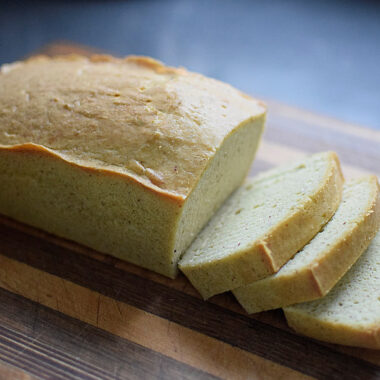Bread is a staple in households worldwide, cherished for its versatility, comfort, and sheer deliciousness. Whether it’s a crusty artisan loaf, a soft sandwich slice, or a homemade sourdough, there’s nothing quite like the smell and taste of fresh bread. But bread’s fleeting freshness is its Achilles’ heel—leave it out too long, and it goes stale or moldy; store it improperly, and you lose that delightful texture and flavor. So, how long does bread stay fresh, and what’s the best way to store it? In this guide, we’ll explore how long bread lasts at room temperature versus in the freezer, the factors that affect its shelf life, and practical tips to keep it tasting its best.
The Basics of Bread Freshness
Before diving into storage methods, let’s define what “fresh” means for bread. Fresh bread has a soft, moist crumb (the interior), a crisp or tender crust (depending on the type), and a full, aromatic flavor. Over time, bread undergoes two main processes that degrade its quality: staling and mold growth. Staling is a natural chemical process where the starch molecules in bread recrystallize, causing it to dry out and harden. Mold, on the other hand, thrives in warm, humid conditions and can turn your loaf into a science experiment gone wrong.
The shelf life of bread depends on several factors:
- Type of bread: Lean breads (like baguettes) stale faster than enriched breads (like brioche) with fat or sugar.
- Ingredients: Preservatives in store-bought bread extend shelf life, while homemade bread, free of additives, spoils quicker.
- Storage conditions: Temperature, humidity, and air exposure play huge roles.
- Packaging: A loaf in a sealed bag lasts longer than one left uncovered.
With these in mind, let’s break down how long bread stays fresh at room temperature and in the freezer—and how to maximize both methods.
Bread at Room Temperature: How Long Does It Last?
Room temperature storage is the go-to for most people because it’s convenient and keeps bread ready to eat. But “room temperature” isn’t a one-size-fits-all term—it typically means 68°F to 77°F (20°C to 25°C), with moderate humidity. Here’s how long different types of bread last under these conditions:
Homemade Bread
- Shelf Life: 2–4 days
- Homemade bread, especially artisan varieties like sourdough or a rustic white loaf, lacks preservatives, so it stales quickly. A fresh-baked loaf might feel perfect on day one, with a crackling crust and chewy interior, but by day three, it’s noticeably drier. By day four, it’s often too stale to enjoy fresh.
Store-Bought Sandwich Bread
- Shelf Life: 5–7 days (unopened), 3–5 days (opened)
- Commercial sliced bread, packed with preservatives like calcium propionate, lasts longer than homemade. An unopened loaf can stay soft for up to a week, but once you break the seal, air and moisture accelerate staling and mold growth.
Artisan Bread (Store-Bought)
- Shelf Life: 2–3 days
- Baguettes, ciabatta, and other crusty loaves from the bakery don’t have preservatives and are designed to be eaten fresh. Their high crust-to-crumb ratio means they lose moisture fast, turning rock-hard within a couple of days.
Specialty Breads (e.g., Brioche, Challah)
- Shelf Life: 4–6 days
- Enriched breads with butter, eggs, or sugar retain moisture better than lean breads, giving them a slightly longer room-temperature life. Still, they’re prone to mold if not stored properly.
Signs Bread Is No Longer Fresh
At room temp, bread doesn’t just stale—it can spoil. Look for:
- Staleness: Hard, dry texture; loss of flavor.
- Mold: Fuzzy green, white, or black spots (toss it immediately—don’t just cut off the moldy part; spores spread).
- Off Smell: A sour or musty odor means it’s past its prime.
Best Practices for Room Temperature Storage
To keep bread fresh as long as possible at room temperature, storage is key. Here’s how to do it right:
- Use a Bread Box
- A bread box balances airflow and humidity, slowing staling while preventing mold. It’s ideal for homemade or artisan loaves. Keep it in a cool, dry spot—away from the stove or sink.
- Paper Bags for Crusty Bread
- Baguettes and sourdough thrive in paper bags, which let the crust breathe and stay crisp. Plastic traps moisture, softening the crust and inviting mold.
- Plastic Bags for Soft Bread
- Sandwich bread or rolls do best in their original plastic packaging or a resealable bag. Squeeze out excess air to limit moisture buildup.
- Avoid the Countertop Trap
- Leaving bread uncovered on the counter exposes it to air, speeding up staling. Always wrap it or store it in a container.
- Don’t Refrigerate
- The fridge (35°F–40°F) accelerates staling by speeding up starch recrystallization. Unless you’re in a hot, humid climate where mold is a bigger risk than staleness, skip the fridge.
Pro Tip: Reviving Stale Bread
If your bread goes stale at room temp, don’t despair! Sprinkle it lightly with water, wrap it in foil, and heat it in a 300°F oven for 5–10 minutes. This rehydrates the crumb and crisps the crust—good as new (almost).
Bread in the Freezer: How Long Does It Last?
When you can’t eat bread fast enough, the freezer is your best friend. Freezing halts staling and mold growth by locking moisture in place and keeping the bread in suspended animation. Here’s how long frozen bread stays fresh:
All Bread Types
- Shelf Life: 3–6 months
- Whether it’s homemade sourdough, store-bought sandwich bread, or a fancy brioche, bread keeps its quality in the freezer for up to six months. Beyond that, it won’t spoil, but freezer burn and flavor loss can creep in.
Why Freezing Works
At 0°F (-18°C), the freezer stops the chemical processes that cause staling and kills off mold spores. The key is preventing air exposure and moisture loss, which can degrade texture over time.
Best Practices for Freezer Storage
Freezing bread isn’t as simple as tossing a loaf in the icebox. Follow these steps to ensure it emerges tasting fresh:
- Wrap It Tight
- Double-wrap bread to protect against freezer burn. Start with plastic wrap or aluminum foil to seal it, then place it in a freezer-safe zip-top bag. Squeeze out as much air as possible.
- Slice Before Freezing
- For sandwich bread or loaves you’ll use gradually, slice it first. This lets you grab a piece or two without thawing the whole loaf. Separate slices with parchment paper to prevent sticking.
- Freeze Fresh
- Freeze bread at its peak freshness—ideally within a day of baking or buying. Freezing stale bread won’t magically restore it.
- Label It
- Write the date on the bag. While bread is safe indefinitely in the freezer, tracking time ensures you enjoy it at its best.
Thawing and Reheating Frozen Bread
- Thawing: Let bread sit at room temperature for 1–3 hours (depending on size). For a quick thaw, microwave individual slices for 20–30 seconds, but don’t overdo it—they’ll turn chewy.
- Reheating: To restore that just-baked vibe, sprinkle the thawed loaf with water, wrap in foil, and bake at 325°F for 10–15 minutes. For crusty bread, skip the foil and bake directly on the rack for a crisp finish.
Room Temp vs. Freezer: Which Is Better?
The choice between room temperature and freezer storage depends on how quickly you’ll eat the bread:
- Room Temp: Best for short-term use (a few days). It keeps bread at its freshest without extra effort, perfect if you’re a daily bread eater.
- Freezer: Ideal for long-term storage or bulk buys. It’s a lifesaver for preserving leftovers or stocking up, though it requires planning to thaw.
Here’s a quick comparison:
| Factor | Room Temperature | Freezer |
|---|---|---|
| Shelf Life | 2–7 days | 3–6 months |
| Texture | Best when fresh | Slightly less crisp |
| Convenience | Immediate access | Requires thawing |
| Space Needed | Minimal | Freezer space required |
| Best For | Daily use | Bulk or occasional use |
Special Cases: Bread Shelf Life Variations
Not all bread behaves the same. Here’s how some unique types fare:
- Gluten-Free Bread: Often denser and drier, it lasts 3–5 days at room temp or 3 months in the freezer. Store-bought versions with preservatives may stretch to a week.
- Flatbreads (e.g., Pita, Naan): 2–4 days at room temp, 2–3 months frozen. They dry out quickly but reheat well.
- Bread with Add-Ins (e.g., Nuts, Fruit): Moisture from extras like raisins can speed mold growth—2–3 days at room temp, 3 months frozen.
FAQs About Bread Freshness
- Can you eat bread past its “best by” date?
- Yes, if it shows no mold or off odors. “Best by” is about quality, not safety.
- Why does bread mold faster in summer?
- Heat and humidity create a mold-friendly environment. Switch to freezer storage in warm climates.
- Does toasting fix stale bread?
- It improves texture temporarily but won’t reverse staling fully. Better for day-old bread than week-old.
Conclusion: Keep Your Bread Fresh, Your Way
Bread’s freshness is a delicate dance between time, temperature, and storage. At room temperature, you’ve got a few days to enjoy it at its peak—perfect for daily bakers or sandwich lovers. In the freezer, you can stretch that timeline to months, making it a game-changer for occasional eaters or bulk shoppers. The trick is matching your habits to the method: keep a loaf on the counter for the week, freeze extras for later, and always store it smartly.
Next time you grab a loaf, think about how long you want it to last. With a bread box, a paper bag, or a freezer stash, you can savor every slice—fresh, crusty, or soft—exactly how you like it. So, how long does bread stay fresh? It’s up to you and your storage savvy.


















